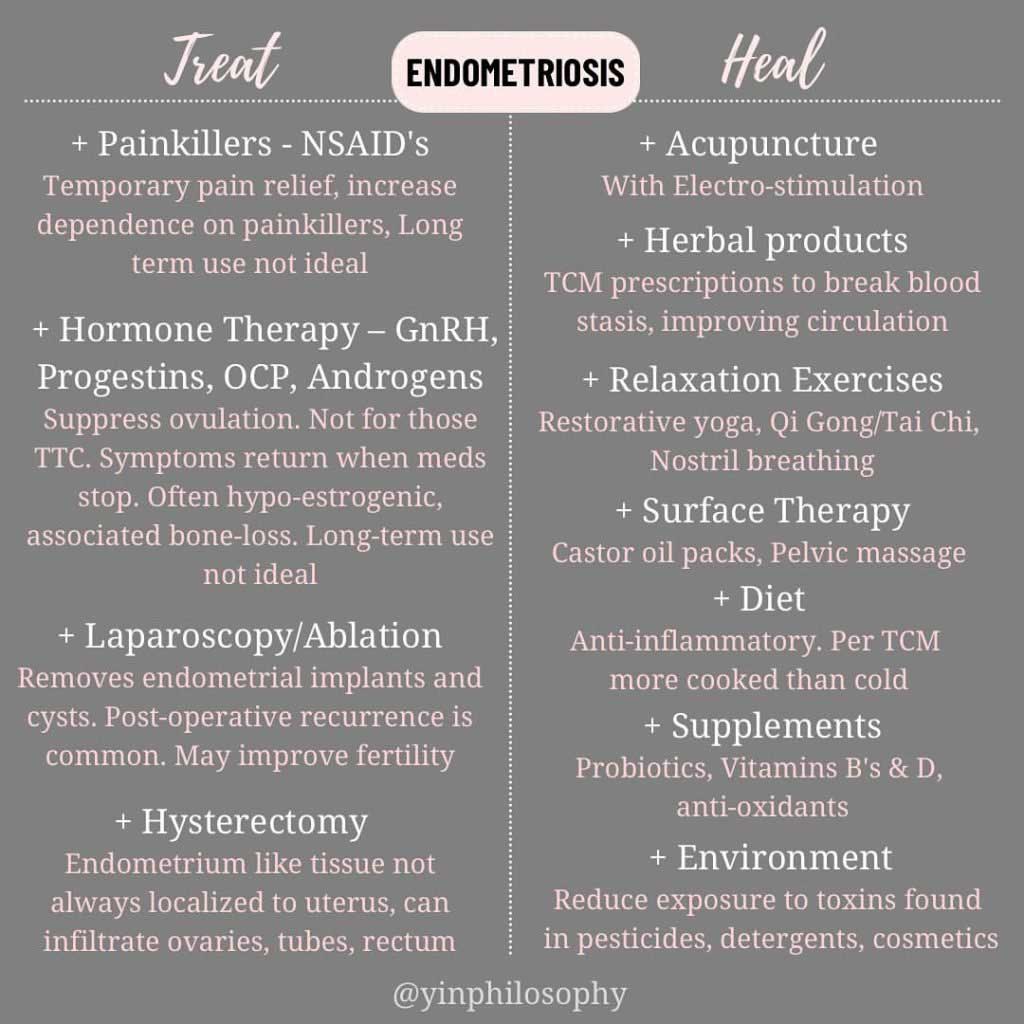How Chinese Herbal Medicine can help with Endometriosis

Endometriosis is a chronic disorder affecting 10% of women worldwide. The word Endometriosis is derived from the word ‘Endometrium’ which is the lining inside the uterus. It is a condition in which the endometrial tissue is found outside the uterus, where it triggers an inflammatory response that can result in the formation of scar tissue.
Endometriosis Symptoms
- Pelvic pain during menstruation
- Painful intercourse
- Painful ovulation
- Heavy menstrual Bleeding
- Mid-cycle Bleeding or spotting
- Diminished fertility
- Digestive changes
Causes and Treatment Options
There is no known cause of Endometriosis. Backflow of menstrual blood is believed to be the most common cause. Backflow or retrograde flow essentially means the period flows upward instead of downward. The blood flows back through the fallopian tubes and into the pelvic cavity. The endometrial cells in the blood continue to grow and thicken over time forming adhesions. Genetic predisposition is a factor. A woman is 6 times more likely to develop Endometriosis if her sister, mother, or grandmother has it. Induction theory is another widely held cause. Researchers believe that hormones or immune factors transform peritoneal cells into endometrium-like cells.
There is no known cure for Endometriosis. Birth control pills and estrogen blockers are used for temporary relief but are not suitable for long-term due to associated side effects. Surgery can remove lesions, but they tend to grow back. Hysterectomy is not always successful since the endometrial tissue is usually not limited to the uterus.
Endometriosis and Fertility
Endometriosis causes infertility by affecting the quality of eggs, passage of gametes through the fallopian tubes, inferior lining of the endometrium, and poor implantation rates.
The inflammation manifests as an increase in fluids, causing an increase in macrophages and their secretions. Macrophages are large cells that mop up cellular debris including sperm cells. Macrophages also secrete chemicals that are toxic to sperm.
If the endometrial lesions are near the fallopian tubes or ovaries, they can distort as well as block those structures. Hence, ectopic pregnancies are more common with endometriosis. Often Endometriosis goes undiagnosed until patients realise their fertile potential is compromised.
Chinese Medicine Treatment for Endometriosis

Like everything else in Chinese medicine, the causes of endometriosis boil down to the underlying pattern. The main patterns associated with endometriosis are as below:
- Qi and Blood Stagnation
- Kidney Yang deficiency
- Phlegm-Damp with Qi deficiency
These patterns exist in varying degrees and combinations for each patient. Treatment protocols are based on case-by-case pattern differentiation and will address the root cause for each presentation.
Chinese herbal medicine (CHM) has been used to treat endometriosis for many years in Asian populations. CHM can resolve inflammation, decrease the size of endometrial lesions, alleviate chronic pain, and reduce postoperative recurrence.
The most common classical formulas used at our clinic are Gui Zhi Fu Ling Wan, Jia Wei Xiao Yao San, and Shao Fu Zhu Yu Tang. These classical formulas can be further modified with individual herbs to target very specific symptoms. Some with fewer lesions may have more pain than others with more lesions. The herb Yan Hu Suo can significantly reduce pain while E Zhu breaks up masses and dissolves accumulations. These herbs can be added to the base formula depending on the presentation. Our patients stay on prescriptions for 4-6 months for best results.






